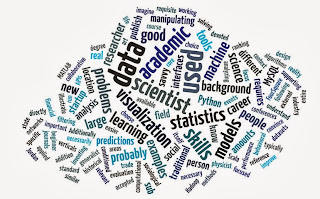This week's guest-blogger is Eilat Glikman. Eilat holds an NSF Astronomy and Astrophysics postdoctoral fellowship at Yale University. She studies dust reddened quasars and their role in quasar/galaxy co-evolution, as well as faint quasars at high redshifts. Eilat has two young children ages 7 and 4 and is dedicated to finding that elusive formula for work/life balance.
When I decided to pursue a career in astronomy (and academia) I was not aware of the incredible amounts of travel required. I hate to travel, get stressed in the run up to a trip, am terrible at packing and get homesick quite easily. Of course, when I arrive at my destination I usually enjoy myself, whether it is observing and getting awesome data or going to a conference and having stimulating and vibrant discussions. Still, it was a rude awakening when I realized the extreme amounts of airline miles that some astronomers rack up (and the frequent flyer culture that ensues).
In graduate school, I made the best of my trips by adding Hawaiian vacations to IRTF runs. But toward the end of graduate school, when I was pregnant, traveling to a remote mountaintop in order to go observing was no longer tolerable and I started taking advantage of remote observing whenever possible. And maybe it is because my first remote observing experiences were with the well-tested interface at IRTF, but once I got a taste of observing without travel, I was hooked.
During my postdoc at Caltech, I used the remote observing facility to observe with the Keck telescope, and delighted in the fact that I could put my toddler to bed, kiss him good night, drive to the office, work all night and come home to sleep during the day. Comparing this routine with one that adds two days of travel and being completely away from my family, the work-life friendliness of remote observing becomes completely apparent.
I have since written entire papers based on remotely obtained data, from Keck and IRTF. More recently I have been using WIYN’s remote observing capabilities to do my science at Yale. And last night I used a new, quite complicated (on paper) instrument on WIYN for the first time. The first half of the night was for my science, after that my observing partner and I handed the reigns to the next team. I drove home, within 30 minutes was asleep in my own bed, and am now back in the office ready to go for another half-night.
I cannot express enough how wonderful that feels.
(I will leave for another post some tips on how to maximize good rest during a remote observing run, especially with children.)
The IRTF offers an ideal model to follow. Anyone with an approved observing program can observe remotely, from anywhere. The last time I observed with IRTF, I did it from the comfort of my own home. The data were beautiful and it might have been the best observing run I ever had!
Observatories, astronomy departments, listen up: If you want to maximize productivity from your facilities, be accessible to more people, and level the playing field for astronomers with different work-life situations and (I didn’t even mention) funding situations, invest in remote observing.



